“If you’re going to do this you have to have total conviction and belief in what you’re doing, or you are not going to make it through the low points. And unless you are incredibly lucky, it’s stressful and hard to build a business. You’re cash constrained, people constrained and time constrained, but we do it because we believe in what we’re doing.”
“Every single day is a rollercoaster and it can be emotionally exhausting. But its’s also incredibly fun. It’s like raising a kid. It takes grit,” adds John Charles Hanley, Williamson’s step son, who joined San Francisco-based Forager Project in July 2013 as co-founder and COO after stints at First Beverage Group and Wassertein & Co (now EagleTree Capital).
“He quit a lucrative career in investment banking to do drive U-Haul trucks in the middle of the night to get our plant up and running,” jokes Williamson, who launched the first Forager products – HPP veg-forward cold-pressed juices, in January 2013, and has since branched out into nut milks, smoothies, cashew-based yogurts, drinkable yogurts and ‘pressed vegetable’ chips made with the pulp left over from the juice pressing process.
“But he grew up in the house up watching me deal with the slings and arrows of outrageous fortune in the food industry when I was at Odwalla, so I guess he knew what he was getting himself into.”
Suja went incredibly aggressive on pricing
And part of that is adapting to changing market conditions – fast – says Hanley, who notes that the dynamics of the HPP juice market changed rapidly from 2013 (when some consumers were parting with $7-10 for a 16oz bottle) and 2014, when Suja turned the market on its head with a $3.99 12oz bottle.
“We came in at $6.99 for a 16oz bottle and then Suja went in with the smaller size and went incredibly aggressive on pricing, so we dropped our size from 16oz to 12oz and went down to $4.99 and we expanded beyond vegetable juices to nut milks, probiotic smoothies and other products.
“If you look at the HPP vegetable juice category it’s relatively flat now, but the nut milk and probiotic categories, at least for us, are growing extremely well.”
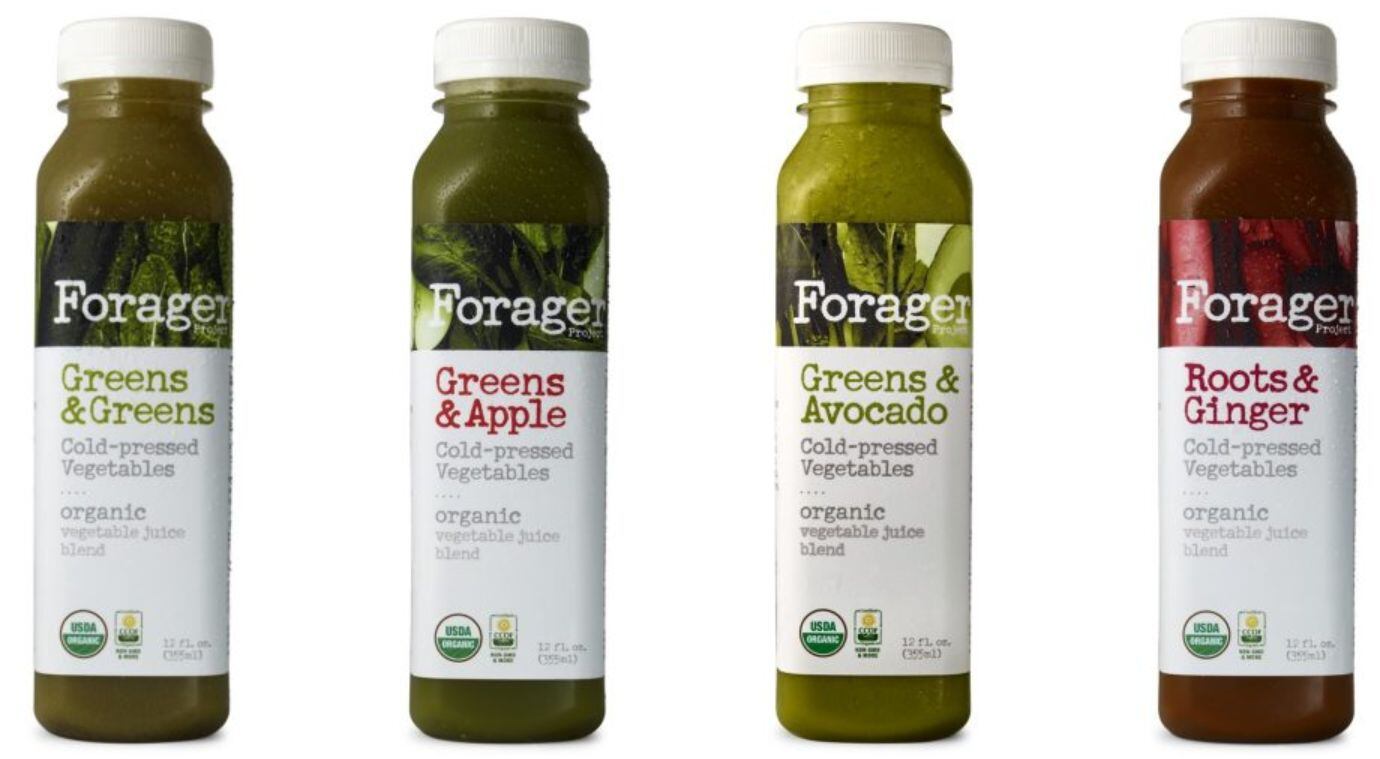
That said, the Forager juices retain a key point of difference with their vegetable-forward approach, says Williamson. “We’ve stuck with our core of less sugar is better and vegetables are the first ingredient.”
We were never just going to be a vegetable juice company
So what’s the Forager brand - now in several thousand stores and growing strongly (although Williamson won’t share numbers) - all about? Organics? Health & wellness? Plant-based innovation? Reducing food waste?
All of the above and more, says Williamson, who always envisaged the brand extending beyond premium juice into a wider platform built on a core set of principles, including: Organic is best, less sugar is better, a plant based diet of nuts, seeds, ancient grains & vegetables is key; be as simple as possible; and taste is the ultimate judge.
“We were never just going to be a vegetable juice company. This company was always going to be a project, and foraging is about wandering and seeking, being curious and open to new things, following some core philosophies and seeing where they take you.
“It’s what happened with the chips,” says Williamson, who has financed the business himself with backing from friends and family and angel investors, but no private equity money, and won’t comment on whether he has received overtures from CPG suitors.
“We didn’t start out thinking, 'We’re going to own the chips category,' we started out thinking what are we going to do with all this wonderful organic vegetable pulp [the stuff left over from the juice pressing operation]"
“I was thinking God, I hate that this is going into compost. And also we paid a good deal of money for the whole vegetable, so it was a case of let’s figure something out, reinvent the tortilla chip without using corn or potato… and no one had done this before.”
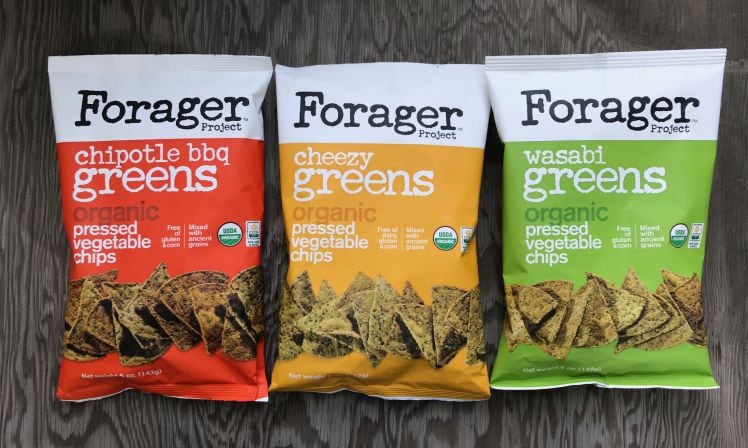
Taste is king? Not always in the plant-based yogurts market…
Admittedly the whole ‘taste is king’ mantra is repeated ad nauseum in the food industry, but you’d be surprised how many brands have neglected it as they rush to meet demand for all things plant-based, says Williamson.
“We do really operate from the perspective that taste is the ultimate judge, whereas there are a number of plant-based yogurts out there that didn’t seem to apply that principle before launching products on the market. You could eat them, but you could also find other uses for them… and I won’t say any more than that.
“That said, there are some great products out there too… It’s not easy to make plant-based yogurt, but I think [with cashewgurt] we’ve come up with a very good tasting product.”
“Buyers have been very receptive to plant-based yogurt and plant-based products in general,” adds Hanley.
“We’ve only been on the market with the cashewgurt cups for just over a year, and we only launched the drinkable Cashewgurt in January 2017, but we’re seeing some incredibly strong velocities. It’s off a small base but the plant-based yogurt category is growing very fast [56%YoY in measured channels according to Nielsen data].”
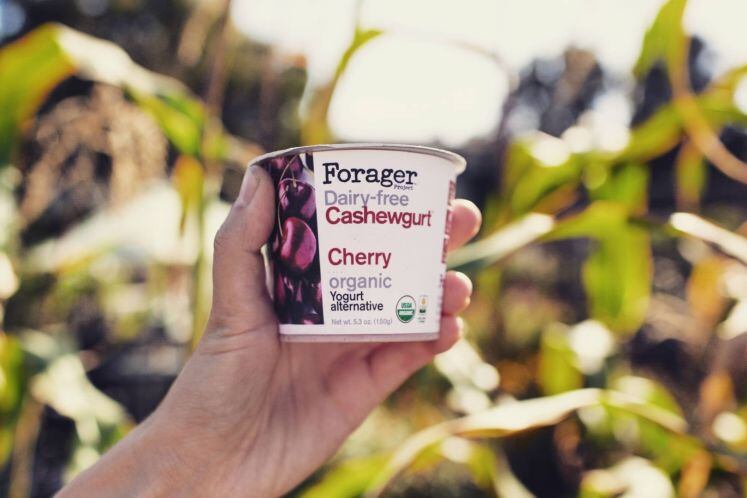
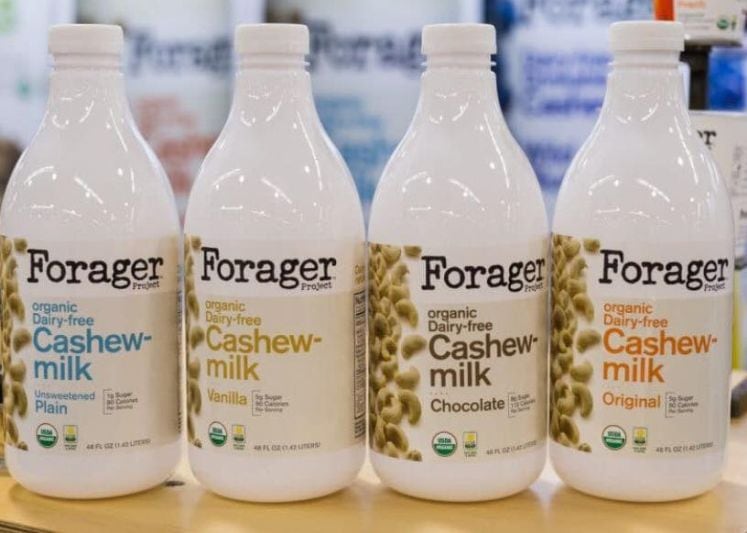
The front panel should line up with the side panel
Further innovations from Forager Project will include cashewgurt line extensions and products featuring other key ingredients beyond cashew nuts, says Williamson, who says that the plant-based dairy arena is heating up fast, but that there are key differences between brands from a formulation perspective.
Forager Project’s unsweetened cashew milk, for example, contains filtered water, cashew nuts, cassava root (which adds mouthfeel), gluten-free oats, vegan cultured dextrose (that serves as a preservative), natural flavor, vanilla extract and sea salt.
It’s organic, high pressure processed (HPP), made in-house, and doesn’t contain locust-, gellan-, guar-gum or carrageenan, added canola oil, or lecithin (an emulsifier) or added calcium carbonate or other vitamins and minerals. This doesn’t make it better or worse than other brands that do contain these ingredients, but it’s a point of difference that is consistent with the brand’s philosophy of keeping things simple, he explains.
“It’s about being as simple as possible, eating food, letting food be and making sure that the front panel lines up with the side panel.”
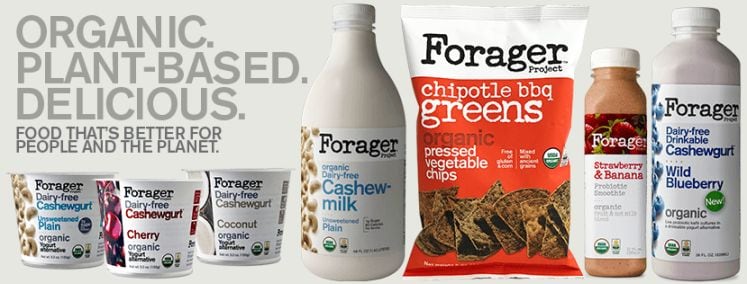
Our nut milk contains more nuts
It also contains 80 calories per 8oz serving, while Silk unsweetened cashew milk contains 25 calories, So Delicious contains 35, and Pacific Foods contains 50. There are formulation differences (the other brands don’t contain cassava root, for example), but this also reflects the fact that Forager uses more nuts, says Williamson (which is denting margins somewhat right now given soaring cashew nut prices).
“If you see an unsweetened nut milk with 40 calories per serving versus one with 80 calories, it probably means that the second one has twice as many nuts, and consumers can see that.”
Another point of difference has been the brand’s decision to make most of its products (except the chips) in-house.
In some respects, it shows how the industry has changed such that we should see this as a novelty for a food company, which for many start-ups is now more about branding and marketing than making things, which is the remit of experienced co-packers or huge legacy brands.
“It’s a point of difference," says Williamson. "It makes sense to me to make what we sell.”
